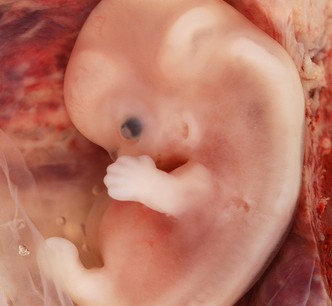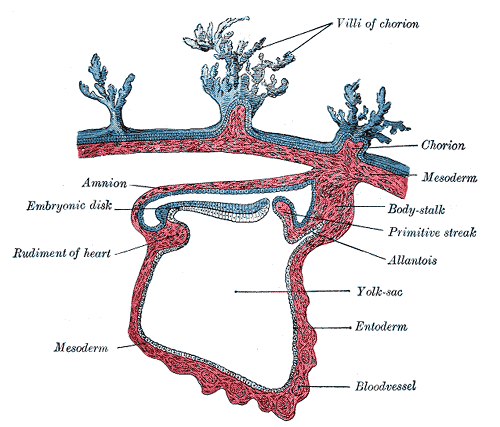CHROMOSOMES
- Are structures composed of condensed DNA and associated proteins
- When DNA condenses, the molecule becomes wrapped around proteins called histones .
- The histones are then arranged in a coiled pattern to produce a larger fiber.
- This larger fiber is further compacted by looping to produce looped domains. The looped domains are coiled and compacted to produce chromosomes.
CHROMATIN
•It is a complex of DNA and proteins
•It includes five basic proteins called histones along with nonhistone proteins
•The density of the chromatin that makes up each chromosome (that is, how tightly it is packed) varies along the length of the chromosome.
TYPES OF CHROMATIN:
There are two types of chromatin.
•Euchromatin is the loosely packed ,less condensed DNA form, and contains genes that are active or frequently expressed by the cell.
•Heterochromatin is the more compact, coiled & condensed form and contains DNA that is infrequently transcribed. Found in parts of the chromosome where there are few or no genes, such as
–centromeres and
–telomeres
NUCLEOSOME
•The DNA strands are associated with 4 types of histones to form repeating units called nucleosomes
GENES
Genes are the hereditary determiners which are arranged in definite linear order in particular chromosomes.
A particular gene can have multiple different forms, or alleles, which are defined by different sequences of DNA.
Centromere
Is the primary constriction in the chromatid of a chromosome where the sister chromatids are attached
KINETOCHORE
•Is the protein structure that assembles on the centromere and links the chromosome to microtubule from the mitotic spindle that move chromosomes during mitosis and meiosis.
KARYOTYPE
A karyotype is the characteristic chromosome complement of a eukaryote specie.
Meiosis:
Meiosis is a special type of cell division that involves two cell divisions. It takes place in germ cells only Diploid germ cells give rise to haploid gametes (sperms and oocytes).
Interphase:
Interphase is divided into three phases:
Growth 1 (G1) phase:
This is a very active period, where the cell synthesizes its vast array of proteins, including the enzymes and structural proteins it will need for growth. In G1 stage each of the chromosomes consists of a single (very long) molecule of DNA. In humans, at this point cells are 46 chromosomes, 2N, identical to somatic cells.
Synthesis (S) phase:
The genetic material is replicated: each of its chromosomes duplicates, producing 46 chromosomes each made up of two sister chromatids. The cell is still considered diploid because it still contains the same number of centromeres. The identical sister chromatids have not yet condensed into the densely packaged chromosomes visible with the light microscope. This will take place during prophase I in meiosis.
Growth 2 (G2) phase:
G2 phase is absent in Meiosis
Interphase is followed by meiosis I and then meiosis II. Meiosis I consists of separating the pairs of homologous chromosome, each made up of two sister chromatids, into two cells. One entire haploid content of chromosomes is contained in each of the resulting daughter cells; the first meiotic division therefore reduces the ploidy of the original cell by a factor of 2.
Meiosis II consists of decoupling each chromosome’s sister strands (chromatids), and segregating the individual chromatids into haploid daughter cells. The two cells resulting from meiosis I divide during meiosis II, creating 4 haploid daughter cells. Meiosis I and II are each divided into prophase, metaphase, anaphase, and telophase stages, similar in purpose to their analogous subphases in the mitotic cell cycle. Therefore, meiosis includes the stages of meiosis I (prophase I, metaphase I, anaphase I, telophase I), and meiosis II (prophase II, metaphase II, anaphase II, telophase II).
Meiosis generates genetic diversity in two ways: (1) independent alignment and subsequent separation of homologous chromosome pairs during the first meiotic division allows a random and independent selection of each chromosome segregates into each gamete; and (2) physical exchange of homologous chromosomal regions by homologous recombination during prophase I results in new combinations of DNA within chromosomes
SIGNIFICANCE OF MEIOSIS
- Provides constancy of the chromosome number from generation to generation by reducing the chromosome number from diploid to haploid, thereby producing haploid gametes.
- Allows random assortment of maternal and paternal chromosomes between the gametes.
- Relocates segments of maternal and paternal chromosomes by crossing over of chromosome segments, which “shuffles” the genes and produces a recombination of genetic material.
MITOSIS
•Every day, our skin cells and other somatic (body) cells undergo division to replenish the dying cells. When this happens, the new cell will have the same amount of chromosomes and organelles. This process is called mitosis.
•This process occurs in all diploid (2n) cells, except for the sex cells, which will produce gametes for reproductive purposes. The process for the production of gametes is called meiosis.
Phases:
- Prophase
- Prometaphase
- Metaphase
- Anaphase
- Telophase
- Cytokinesis
 howMed Know Yourself
howMed Know Yourself



